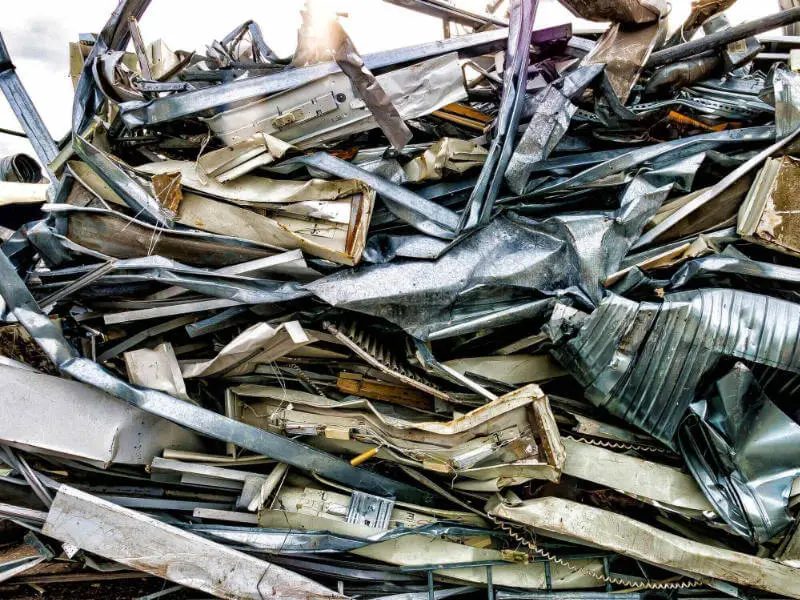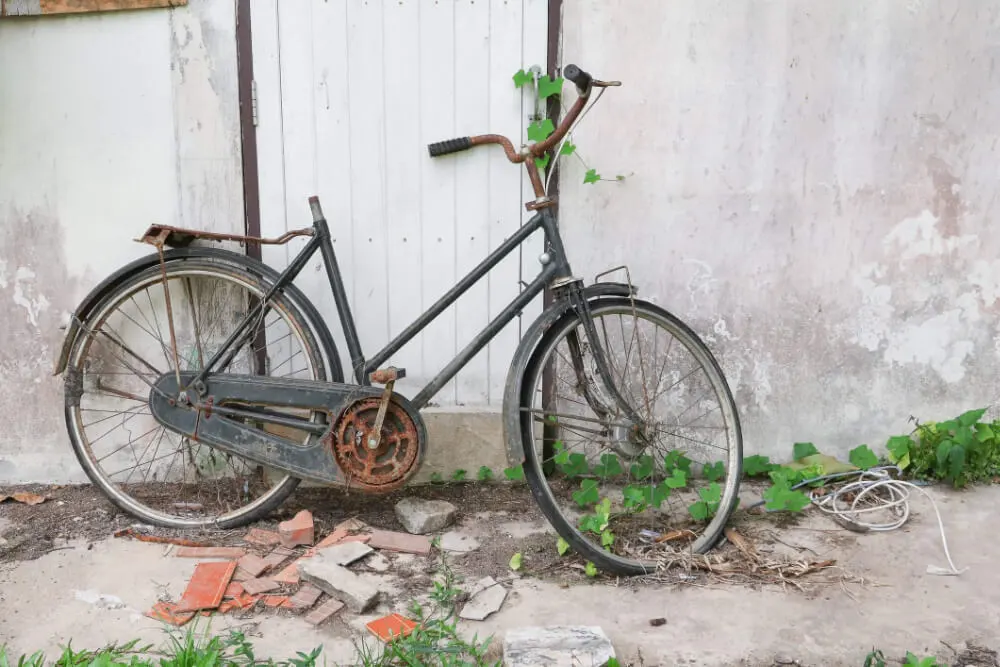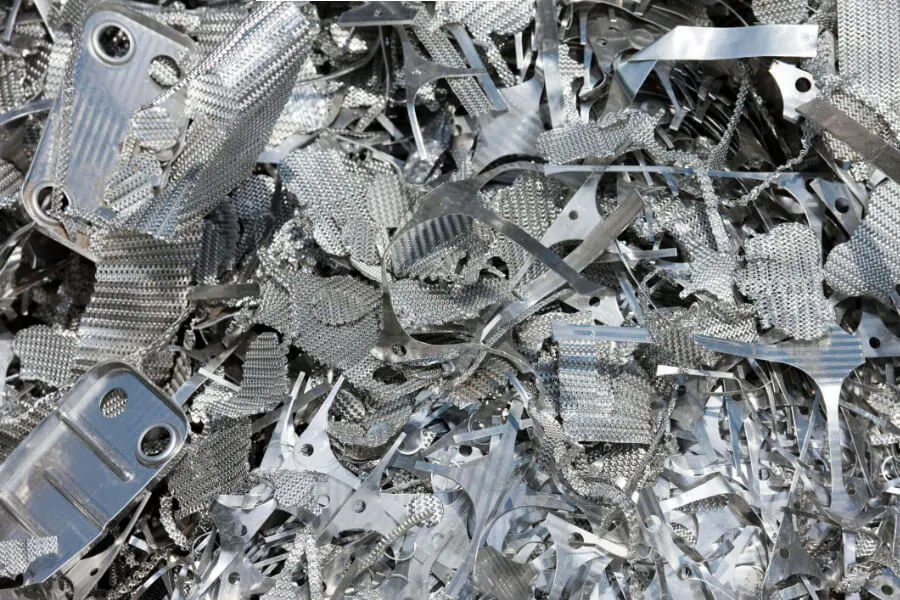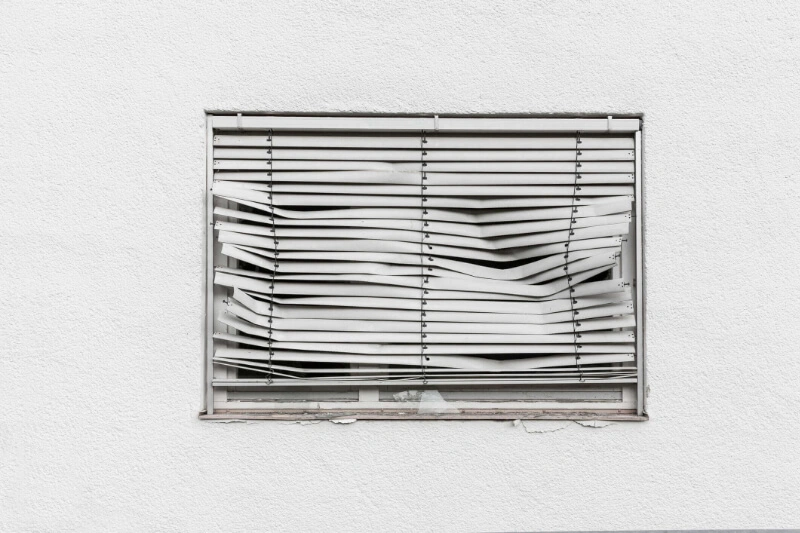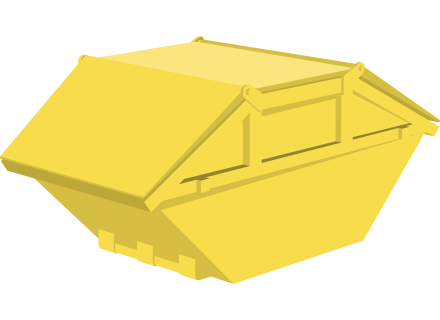We would like to use our own cookies, third-party cookies and similar technologies for statistical and marketing purposes. Customise your preferences by selecting the options below. Of course, you can also change your settings again afterwards. Learn more in our privacy policy.
Dispose of mixed scrap

What falls in the category mixed scrap?
Mixed scrap basically refers to any form of scrap that consists of more than one scrap fraction. Acceptable materials include iron, steel, aluminium, lead, copper, zinc, sheet metal, brass and many more. Proper disposal and subsequent recycling is of great importance to the manufacturing industry, as metal is often not waste but a valuable resource.
This may go in
By disposing of mixed scrap separately, you contribute to environmental protection and resource conservation as metals are almost completely recyclable. It does not matter whether the mixed waste comes from private households or commercial enterprises.
Shelves, blinds, pans, pots, tin cups, keys
Cable scrap, metal scrap
Rim spanner, engine blocks, circuit boards
Barrels, cans (empty)
Beams, pipes, rods, plates
Rain gutters, roof sheets, antennas, hollow conductors
Small adhesions (e.g. wooden handle or plastic coating on cables)
That must not go in
The individual materials are only prepared for recycling in the separation process. Therefore, remove as many non-metals from the container as possible. The purer the metal scrap, the higher the recycling rate.
Hazardous waste
Electrical appliances
Batteries, rechargeable batteries
Liquid waste
Packaging
Construction waste
Would you like to rent this container?
Simply enter your postcode, select the type of waste and the appropriate container and let's gooo!
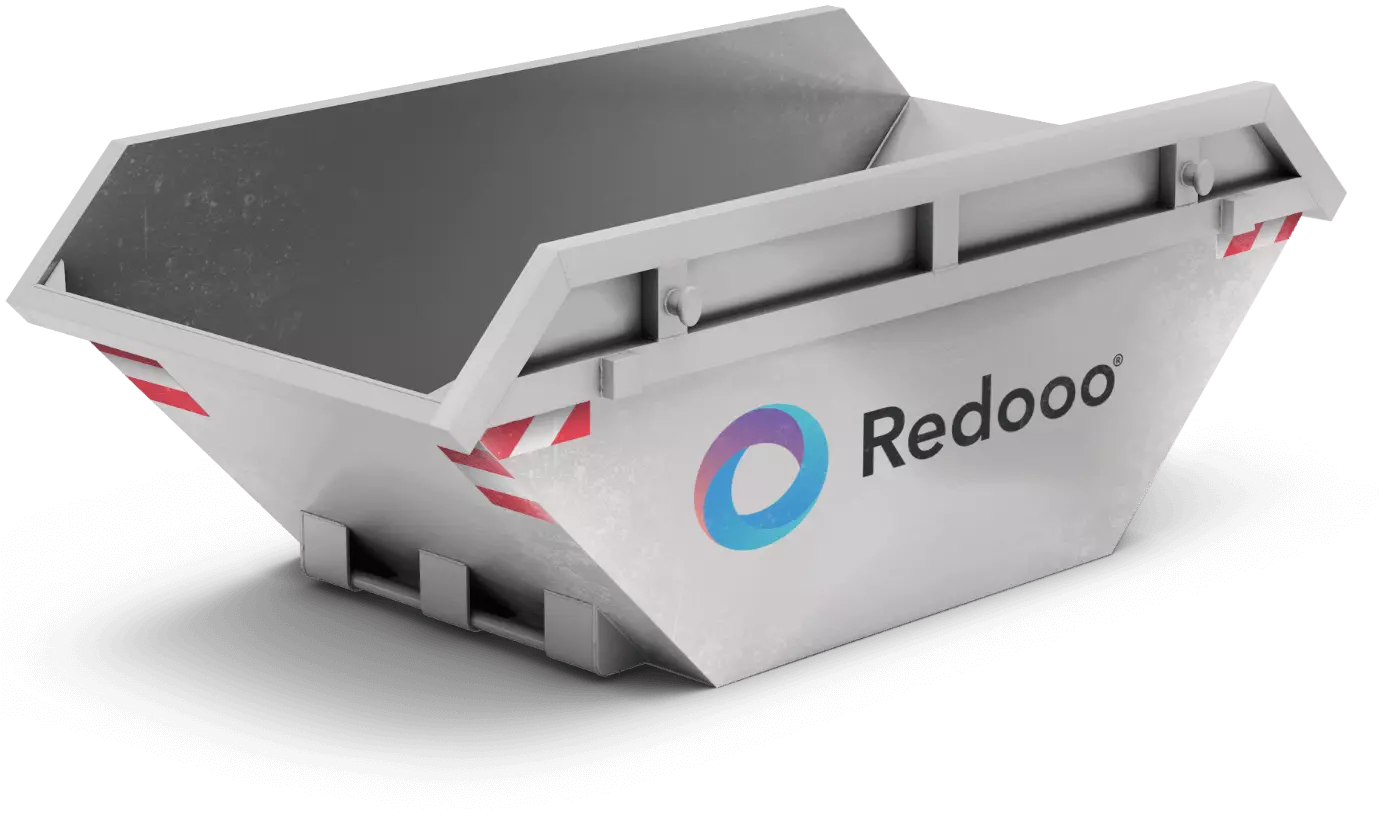
Information on the disposal of mixed scrap
The chain of reprocessing
After collection, the mixed scrap is cleaned and sorted. Sorting usually involves the separation of light and heavy metal parts. On a conveyor belt, the material is sorted by a magnetic separator. Here, iron is separated from non-ferrous metals.
In some cases, this scrap is sent directly to the recycler. In this way, the metal processing industry uses the scrap to create new goods again. However, depending on the type of scrap, the chain of intermediaries can be somewhat longer. Steel scrap is recycled most often. Every year, more than 500 million tonnes are sent for recycling.
Commercial mixed scrap
We also provide professional scrap disposal for commercial customers.
It doesn't matter whether it's new waste from production, steel shavings or small quantities that accumulate, for example, during conversions or construction work.
The quantity to be disposed of is irrelevant. We will find a suitable solution for you and provide you with a customised offer. Full transparency and attractive remuneration apply.
General notes
Filling: Containers may be filled to a maximum of the loading edge. The contents of the container must not exceed the side walls. At this point, independent raising of the side walls is not permitted. No liquid waste may be filled into the container.
Filling weight: Containers whose filling weights exceed a weight of 10 tons may not be transported. Please pay attention to the filling conditions and maximum weights. Overfilled containers cannot be transported safely and must be unloaded by the customer.
Access: Make sure that the vehicle has sufficient space and that access is possible without any problems. The minimum clearance height is 4 metres and the clearance width 3.50 metres. Since the container is lowered or unrolled to the rear, up to 15 metres of space is required. To facilitate manoeuvring, an additional length of 10 to 15 metres should be kept free.
Installation: A suitable surface must be available, i.e. it should be paved, level and stable. Sensitive ground is not suitable to be driven over by a truck, as it can otherwise be damaged by the heavy weight. Furthermore, a container cannot be lifted over fences/walls. Only a maximum height of 30cm can be exceeded.
Permission: If you want to place the container in a public space, you are responsible for the general duty of road safety. Even if we support you in this and help you apply for the necessary official placement permits, you are still responsible.

